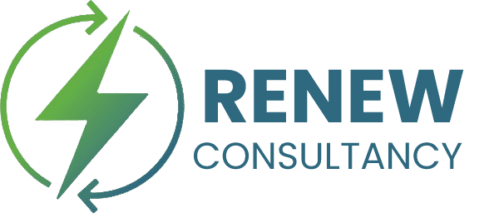Service Operations Manager
Our Client:
Our client is an established company in the critical power sector, who provide nationwide generator maintenance, commissioning, and emergency support to high-security and high-availability sites, including healthcare, defence, utilities, and critical infrastructure.
With a turnover in the million-pound range and 6 UK offices, the business had grown steadily over several decades. But as contracts scaled and engineer coverage expanded, inconsistencies in regional performance and leadership capacity began to affect service delivery and client satisfaction.
While commercially strong, the business lacked the bandwidth at leadership level to embed structure, accountability, and long term cultural cohesion across its service teams.
Our client required two Service Operations Managers to oversee field operations in East Anglia and the Southwest. Both roles were essential in managing regional teams, delivering client support across sensitive and high profile sites, and improving service delivery while maintaining profit margins.
Challenges:
During the early discovery sessions, it became clear that our client was facing several deep rooted operational constraints that had been limiting service performance and leadership continuity across multiple regions.
Regional Imbalance: Service standards varied significantly between regions, with no unified approach to team development, scheduling, or communication. Inconsistent management oversight led to disparities in how teams handled clients, internal processes, and escalation protocols.
Operational Strain: Senior leaders were stretched across too many functions, often juggling frontline firefighting with strategic duties. This left little time to mentor managers or implement long term improvements, creating a cycle of reactive decision making.
Commercial Accountability: Past hires had struggled to take full ownership of profit and loss, cost control, and operational budgeting. The business needed leaders who could combine technical credibility with commercial awareness, treating their regions like individual business units.
Cultural Alignment: Trust and respect within engineering teams were seen as essential but hard to maintain without the right leadership. The client was clear: they needed emotionally intelligent managers who could gain the trust of field engineers, support team growth, and align with the company’s high expectations around client conduct and compliance.
Solutions:
A proven seven-stage consultative process was followed to identify and secure two Service Operations Managers who aligned with the technical, cultural, and leadership needs of each region.
Discovery Phase: In-depth consultations with the leadership team helped understand the distinct needs in each location, from team structure and historical turnover to regional client challenges and internal bottlenecks.
Market Mapping: 147 candidates for the Southwest location, 153 for the East Anglia location.
Engagement: Leaders with experience in diesel generators, CHP, UPS systems, and critical site compliance, particularly those who had led multi-site or mobile engineering teams were approached.
Compensation and Benefit Study: During the initial research and discovery phase, it became apparent that there was a potential disconnect between the client’s current compensation offering and the calibre of leadership required to drive the operational, cultural, and commercial outcomes they were targeting.
Rather than risk engaging the market with an uncompetitive proposition, we supported the client by conducting a compensation and benefits benchmarking exercise. This allowed us to validate the expectations of high-performing Service Operations leaders across the critical power and CHP sectors, particularly those with regional P&L responsibility, technical depth, and experience leading multi-site field teams.
The findings confirmed that several well-aligned candidates were hesitant to engage, citing concerns around total reward, benefits clarity, and the perceived seniority of the role. In response, the client proactively recalibrated the package, ensuring alignment with both industry benchmarks and candidate expectations.
This strategic adjustment enabled a more focused engagement with leaders who could not only meet the brief but also commit with confidence to the challenge at hand, ultimately saving time, protecting brand reputation, and strengthening offer-to-acceptance conversion.
Screening & Evaluation: For the Southwest region, 10 candidates were long listed and progressed through initial screening. Of those, 3 reached the final interview stage, and 1 was successfully hired. For East Anglia, 6 candidates were long listed and 4 were invited to final interview, leading to 1 hire. All candidates were benchmarked across six core competencies, including site compliance, stakeholder management, and commercial acumen.
Client Alignment: Provided transparent scoring, competency comparisons, and red flags, supporting fast and informed shortlisting. Regular steering meetings ensured the process moved forward collaboratively.
Placements: Each candidate brought a different strength to the table: one with deep technical expertise and on the ground credibility, the other with commercial acumen and experience stabilising underperforming teams.
Ongoing Support: We facilitated onboarding plans and held weekly check ins during the critical first 90 days to support integration and mitigate risk.
The Candidates:
Our client appointed two regional leaders. One to oversee operations in the Southwest and another to lead the East Anglia region. Both brought distinct strengths that aligned with the needs of their respective territories.
Southwest Appointment:
A disciplined and hands on leader with a military background and deep expertise in diesel generator servicing and operations.
- Took ownership of the region, implementing structured team meetings, on-call rotas, and service delivery protocols.
- Rebuilt client confidence by conducting in person site visits, resolving historical service issues, and improving escalation response.
- Boosted engineering morale and accountability through regular welfare checks, monthly toolbox talks, and development planning.
- Known for a lead from the front style with high standards and a proactive approach to client engagement.
East Anglia Appointment:
A commercially focused service operations manager with experience overseeing multi megawatt distributed generation assets across gas, battery, and solar.
- Responsible for managing regional uptime, P&L performance, and third-party service contracts.
- Strengthened commercial oversight by managing budgets, asset performance, and contractual compliance.
- Enhanced client trust through transparent communication around project delays and technical challenges.
- Valued for balancing operational leadership with strong stakeholder management and external client-facing responsibility.
- Team Performance Lift: Both regions now have clear leadership, stabilising performance and reducing dependency on central operations.
Client Satisfaction Restored: Communication with end customers has improved, and service delivery has become more consistent across regions.
Commercial Ownership: The new managers are owning P&L reviews, providing cost saving recommendations, and coaching engineers on margin conscious decision making.
Leadership Visibility: Both placements have built strong relationships across field teams and internal support functions, giving the senior leadership team space to refocus on strategic growth.
Results:
- Team Performance Lift: Both regions now have clear leadership, stabilising performance and reducing dependency on central operations.
- Client Satisfaction Restored: Communication with end customers has improved, and service delivery has become more consistent across regions.
- Commercial Ownership: The new managers are owning P&L reviews, providing cost saving recommendations, and coaching engineers on margin conscious decision making.
- Leadership Visibility: Both placements have built strong relationships across field teams and internal support functions, giving the senior leadership team space to refocus on strategic growth.
Conclusion:
This project demonstrates the impact of structured recruitment not just filling vacancies, but securing region specific leaders who can drive operational consistency, commercial improvement, and cultural cohesion. By tailoring our approach to the needs of each territory and completing a comprehensive Compensation and Benefit study, we’ve helped our client in the critical power sector build stronger, more resilient service operations.






